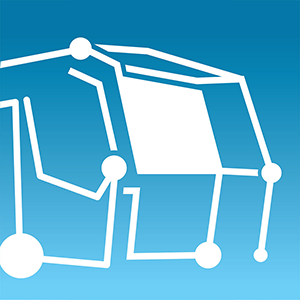
Combination of BALLAST CLEANING AND TRACK RENEWAL
The Plasser MultiLiner systems have been specially developed to combine ballast cleaning and track renewal in one machine. The idea came about because these two applications are usually combined during maintenance in Germany, Switzerland, and Austria. In the case of 2-machine technology with upstream ballast cleaning, the renewal train can usually only thread in once the ballast cleaning machine has finished threading in due to the supply and removal of materials.
Changing sleepers and rails while cleaning the ballast – the MultiLiner is the only complex machine that can do this in a single pass.
After removing the old sleepers, the MultiLiner excavates the ballast, cleans it, and stores the reusable ballast temporarily so it can be used with new ballast to top up the line. A major advantage of the system is that no sleepers need to be included in the excavating chain area, which means that the excavating width can be limited to the ballast crown. The ballast shoulder can be excavated on both sides as required using shoulder excavating units. This design allows the Plasser MultiLiner to resume working continuously in restricted working gauges, such as along railway platforms. This increases productivity because additional construction work is no longer necessary for these sections. The machine’s production time increases, and an additional conventional conversion is not necessary.
Then the new sleepers are laid, and immediately afterwards the new rails are laid on the fastening points. Held by numerous rail guiding clamps, the old rails are continuously exchanged for new ones.
Even the process of replacing rails is not impeded by platform structures. By guiding them skilfully beside and above one another, i.e. by lifting and spreading them, the rails swap their places on the rail fastenings and sleeper ends. They are subjected to only minimal bending stresses as the free work space underneath the machine is 45 metres long. This is only possible because the machine lifts at the centre while at the same time the two 4-axle end bogies are manoeuvred outwards. Once the new track is in place, an integrated 8-spindle wrench is used to tighten the rail fastenings.
Gantry cranes are also used for the MultiLiner. Two identical systems, each accommodating 25 or 30 sleepers, transport new and old material in shuttle operation and in a relay system. The new sleepers are fed and deposited from the front in the working direction. The old sleepers, dispensed and collected by the track renewal machine one level lower down, are picked up by the gantry crane and transported away. These old sleepers are laid down on the space that has become available on the wagon consist coupled at the front.

The great advantage of the MultiLiner is that both applications are possible with one machine. This saves a considerable amount of net track-possession time and increases the MultiLiner’s average shift output to 2,000 metres per shift. This means that the track has been completely renewed, bolted, cleaned, and tamped once.

– Emissions reduced
– Time/Track possession saved
– Availability of the railway route increased
– Residents less inconvenienced
– High quality of the renewed track so it can be opened for traffic immediately
– Layer-by-layer installation of the ballast bed with cleaned ballast and integrated compacting and tamping
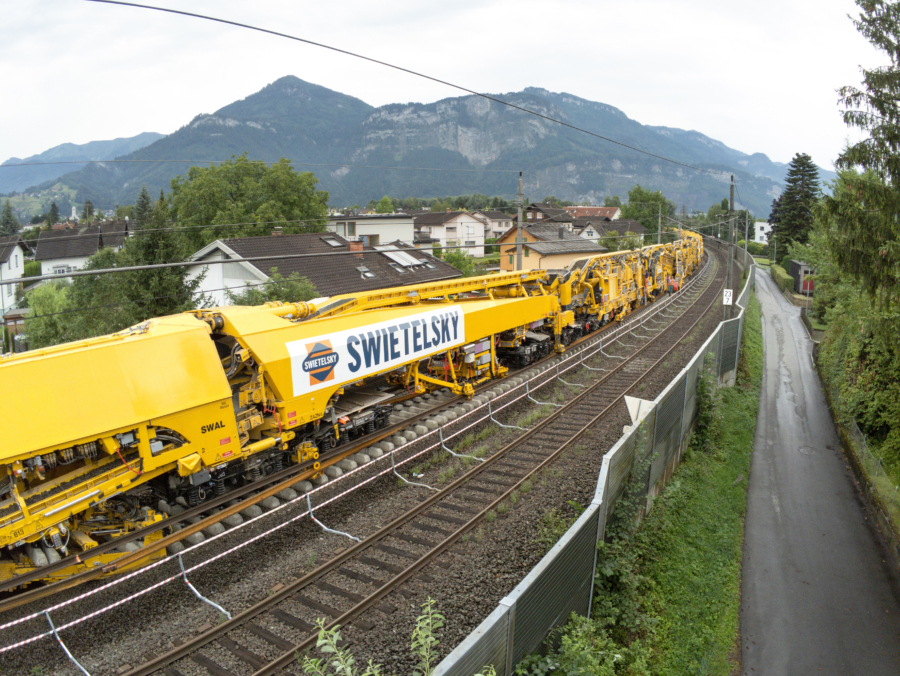
The Plasser MultiLiner (RUS 1000 S) including construction train for material logistics
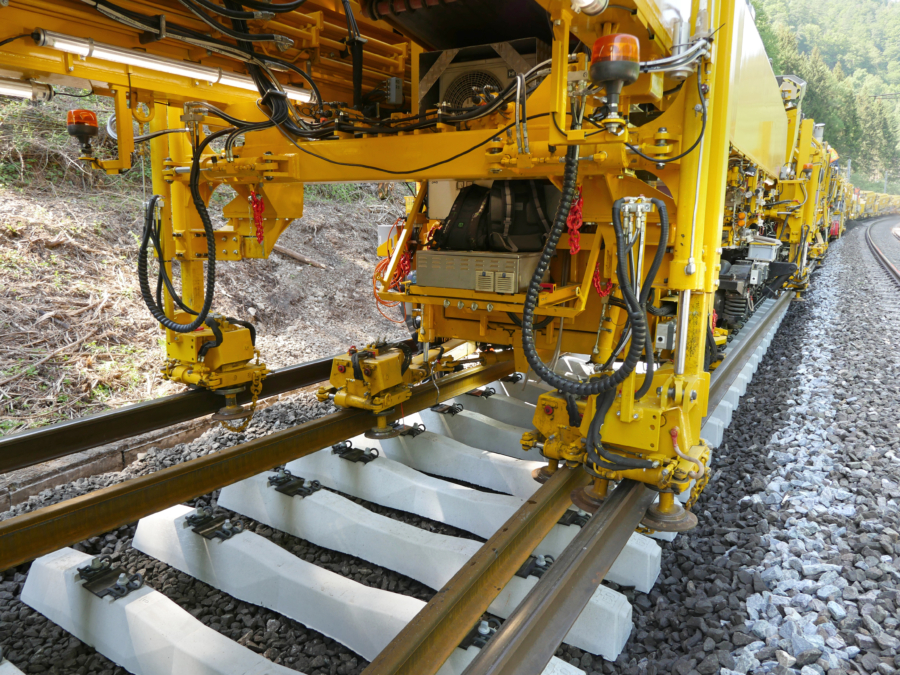
The rails and sleepers are renewed simultaneously, and the ballast is cleaned in a construction gap of only 6 m
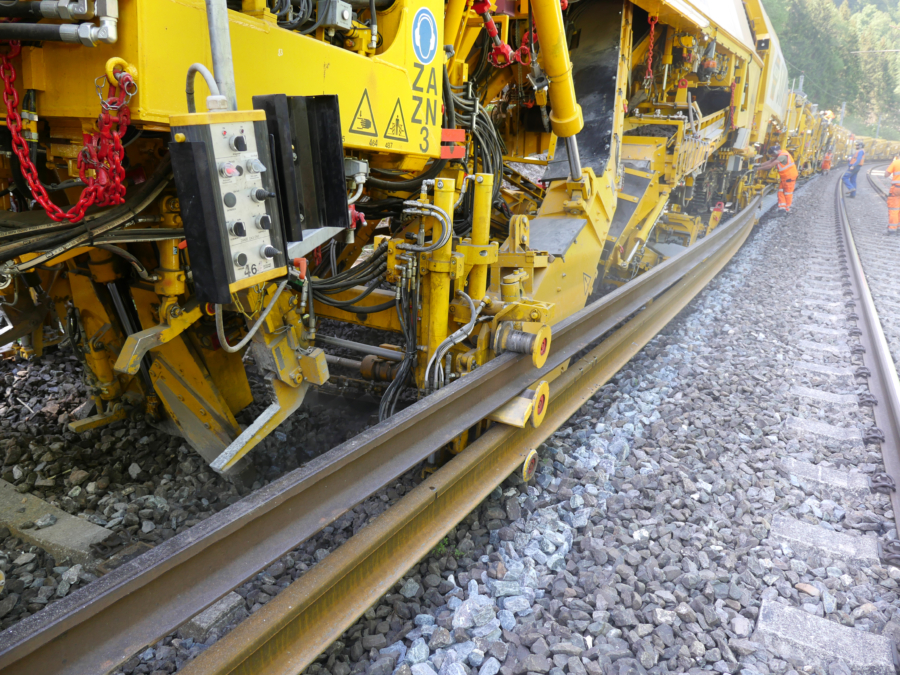
The machine lifts and spreads the old rails, passing them alongside it. The new rails are installed after exchanging the sleepers
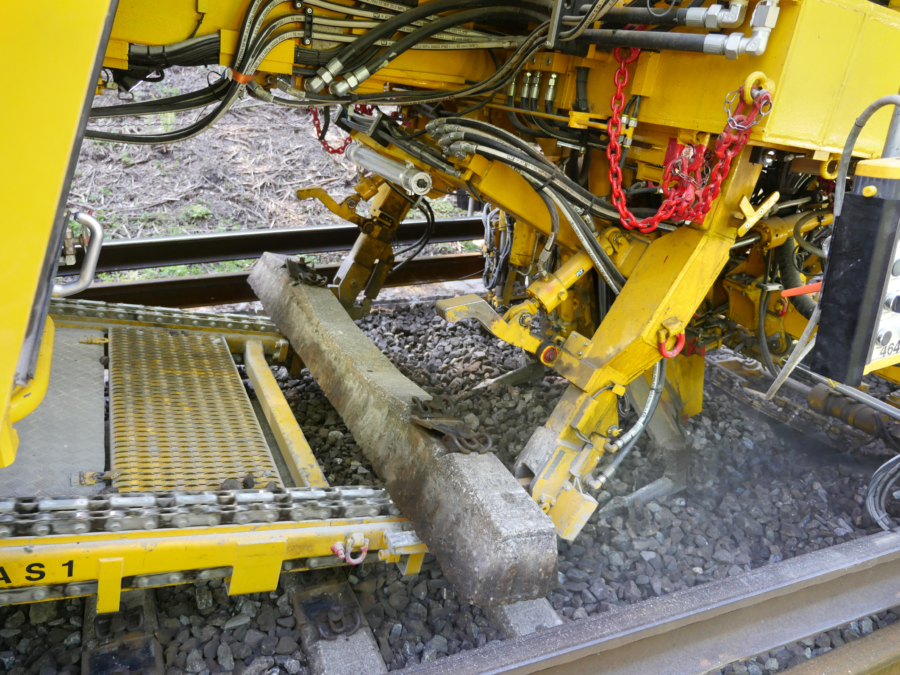
The old sleepers are removed and transported away
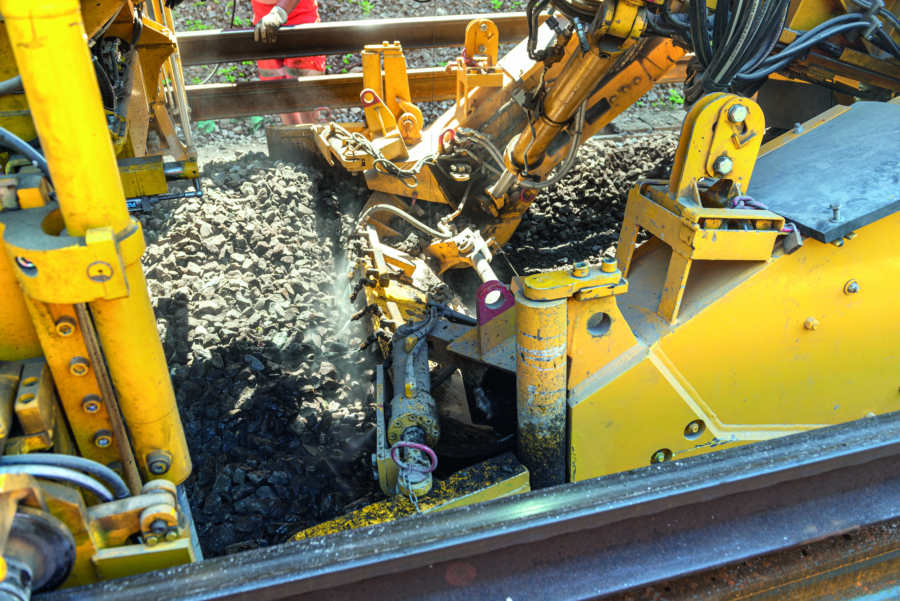
The old ballast is removed and the excavating chain creates a perfect support for the new sleepers; dust is suppressed by spraying water
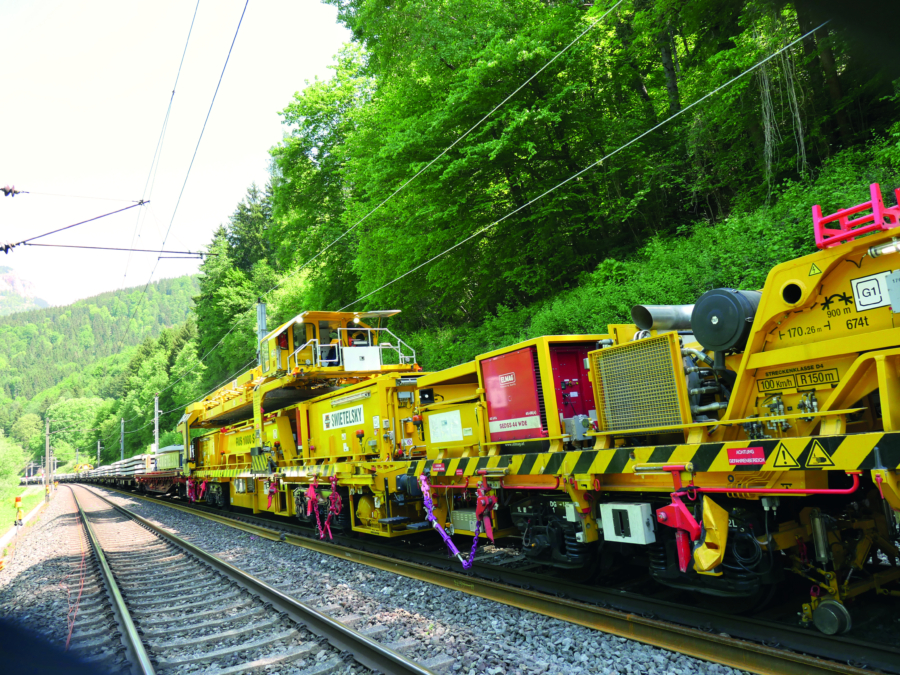
Gantry cranes handle the supply and removal of old and new sleepers – the wagons are equipped with a newly developed derailment protection system to ensure a safe work process
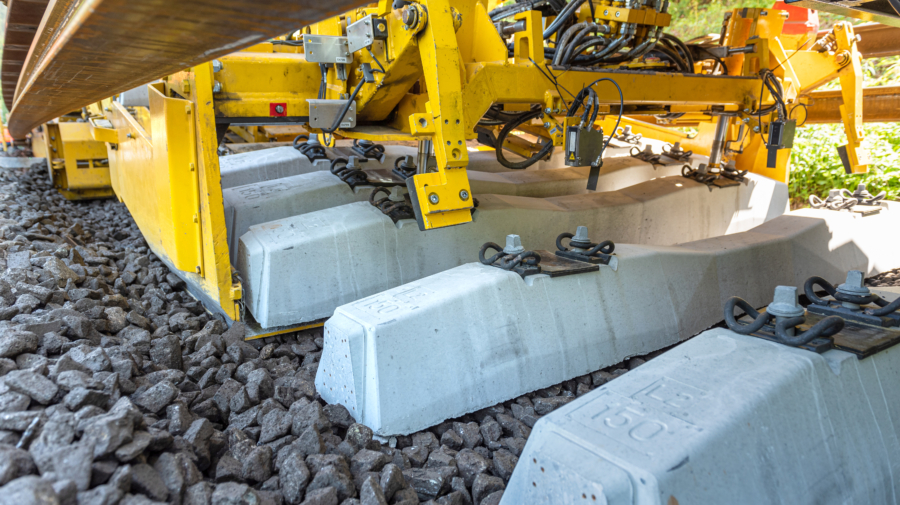
Precise laying of up to eight new sleepers per minute
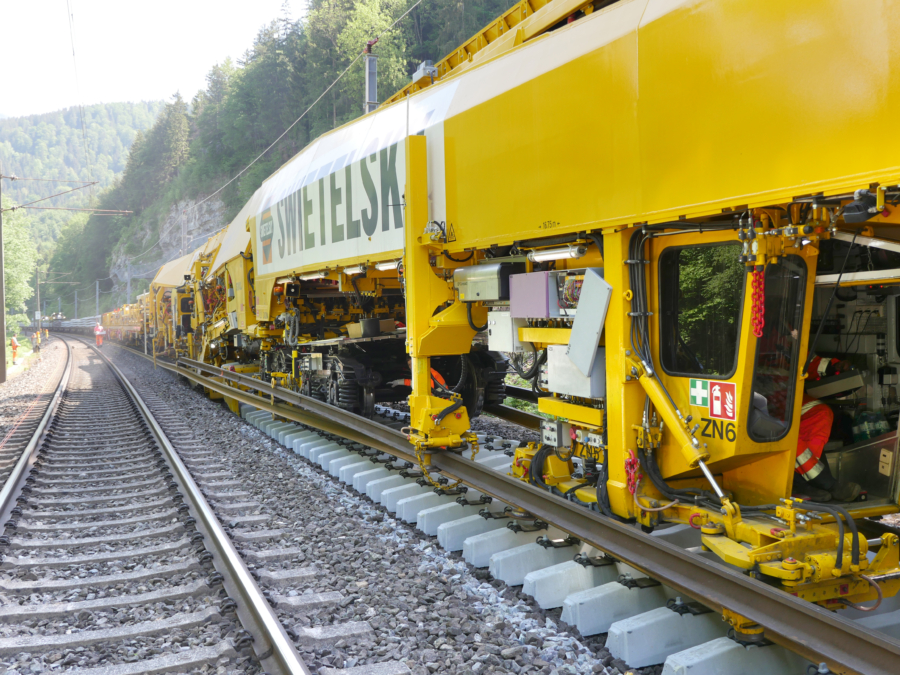
The new rails are moved and laid on the newly laid sleepers
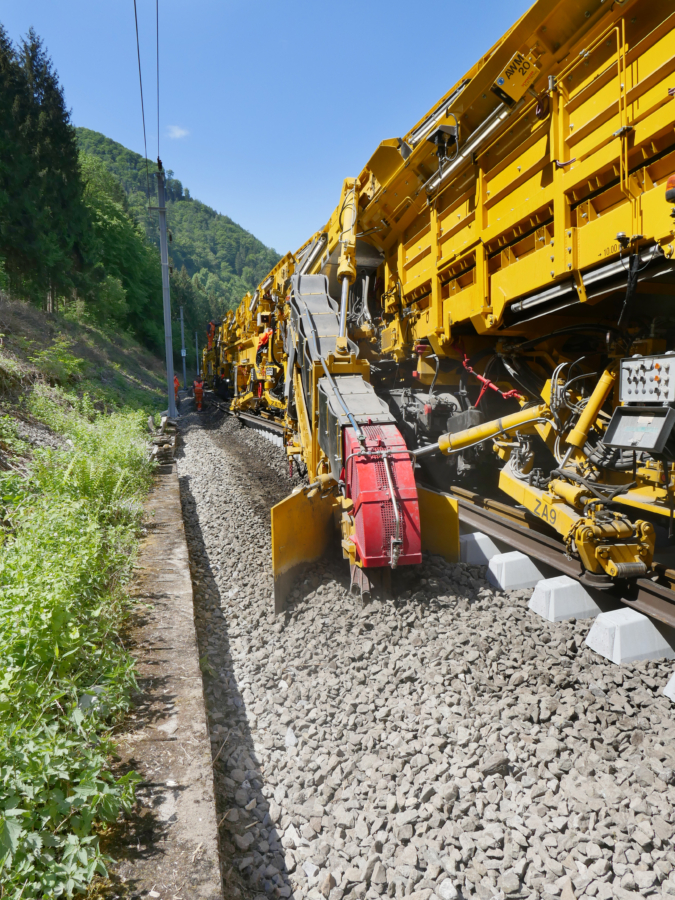
Two shoulder excavating units remove the ballast gradually and transfer it to conveyor belts which convey it to the screening wagon
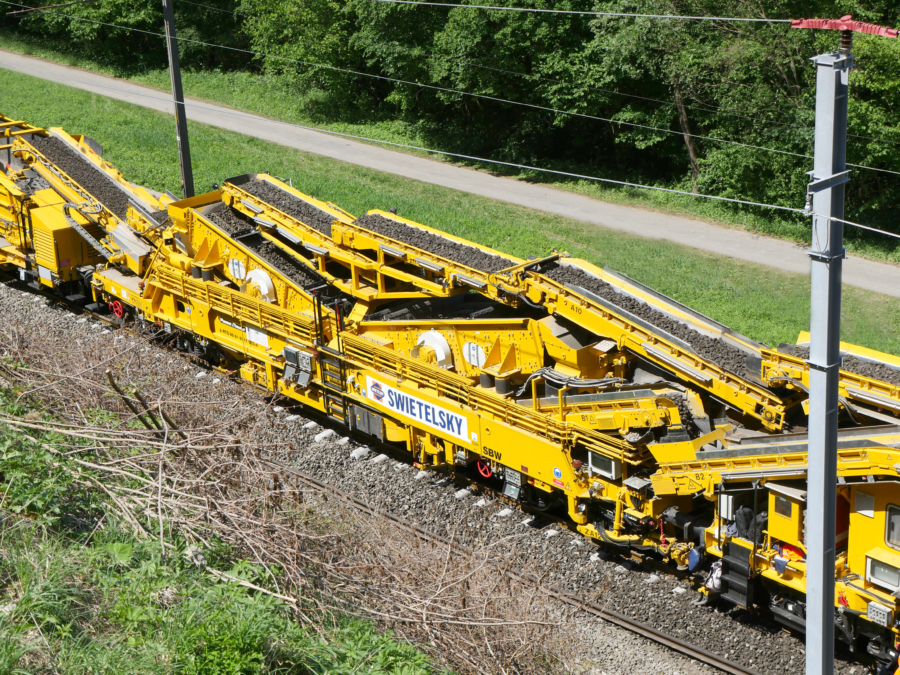
All the ballast collected is conveyed to the high-performance double-screening unit. It is cleaned and reinserted
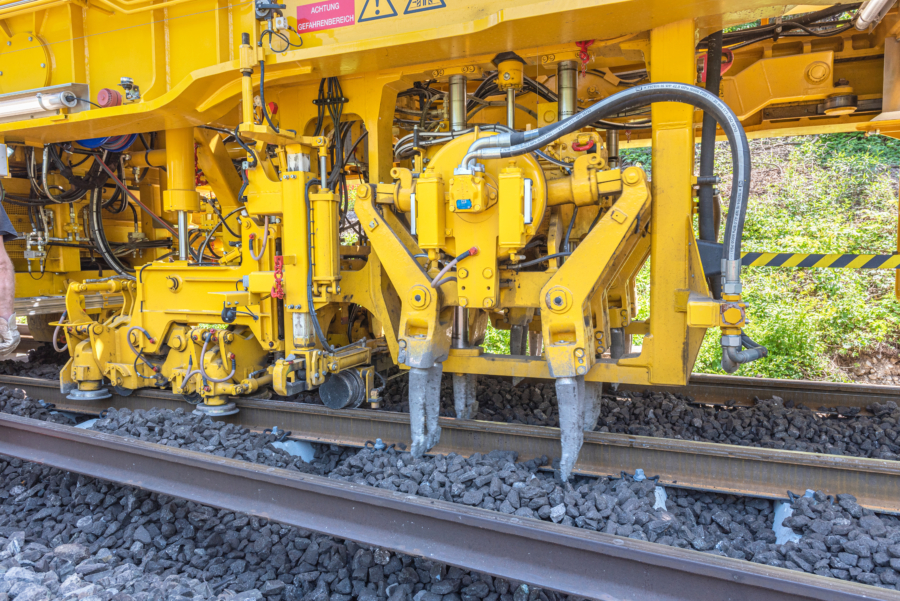
The tamping unit segment with a lifting and lining unit as well as a tamping unit completes the first tamping cycle and fixes the track panel in place
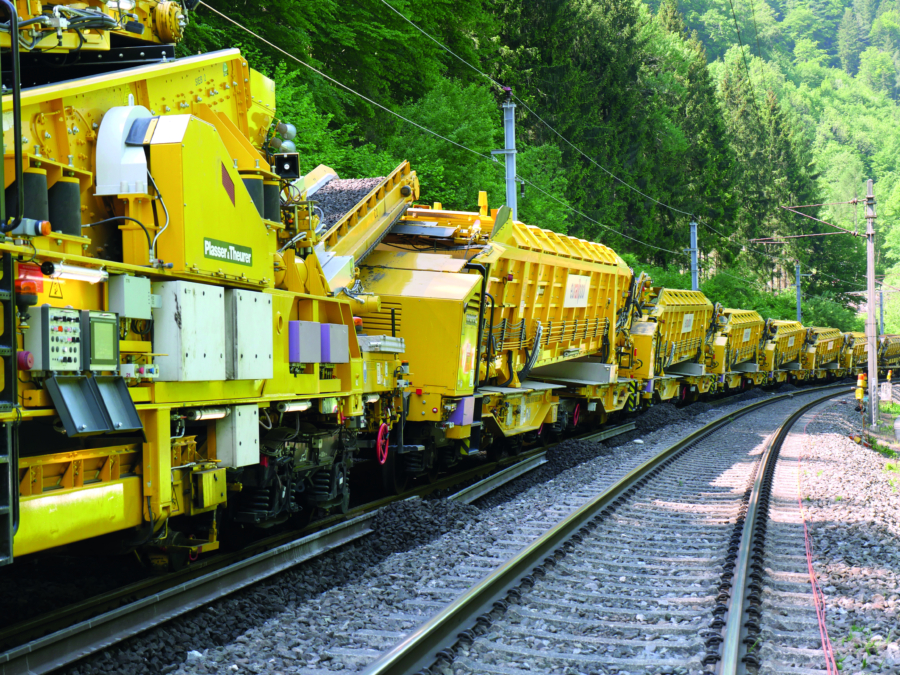
Spoil is loaded into attached MFS units and transported away on the track under construction